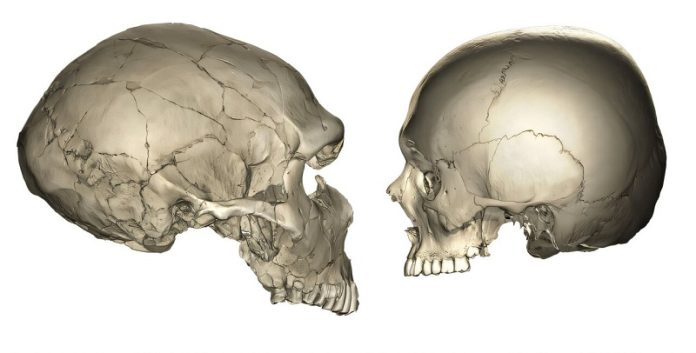
Modern humans have much smaller and softer-looking faces compared to our ancient relatives like Neanderthals.
But why is that?
A new study from the Max Planck Institute for Evolutionary Anthropology offers some answers.
The researchers found that the smaller size of our faces comes down to how and when our faces stop growing.
Alexandra Schuh, the lead author of the study, explained that in humans, facial growth slows down and stops earlier than it does in other species like Neanderthals and chimpanzees.
While those species keep growing for a longer time, human faces mostly stop developing around adolescence. As a result, our adult faces are smaller and more delicate.
The study was published in the Journal of Human Evolution and focused on the process of development over time, known as ontogeny.
The team compared facial growth from infancy to adulthood in humans, Neanderthals, and chimpanzees. This allowed them to see when and how the growth patterns changed.
They also looked at cellular activity in the bones of the face. In humans, this activity drops around the time facial growth ends—usually in the teenage years. This matches the smaller adult face seen in our species.
According to Schuh, this research helps us understand how certain features unique to humans developed over time. The study also adds new insight into a process called cranial gracilization, which describes how human skulls and faces became smaller and less rugged throughout evolution.
In short, our smaller faces are the result of a shorter growth period during development. This change likely played a key role in how our species evolved to look different from other ancient relatives.



